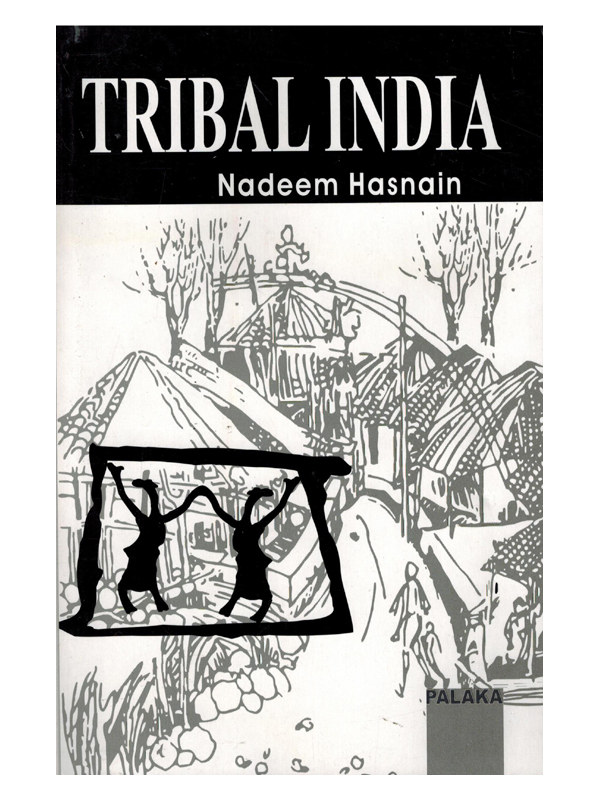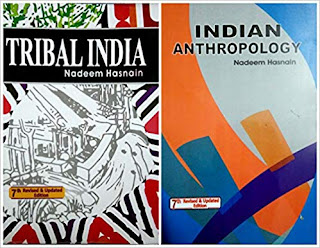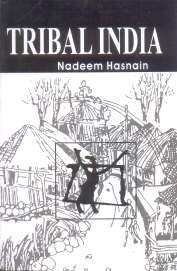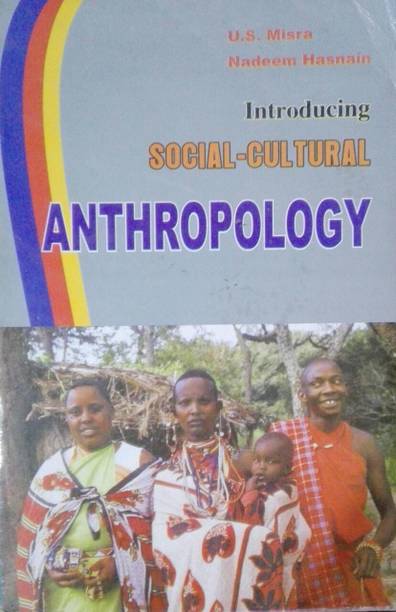The variations in Indian tribes can be incredibly intimate and complex. As such it is not possible to accurately classify them into different groups based solely on cultural characteristics. However, considering that numerous tribes in India are essentially non-nomadic in nature, many tribes take residence in forest areas or clusters in villages in the vicinity of forests. As such, regional groupings or more precisely, zonal classifications can be attempted based on the geographical distribution of tribes in India.
One of the most Popular book for Indian Anthropology and also recommended for Civil Services Examination as an Anthropology Optional. Basic recommended books: Books by Nadeem Hasnain on Indian Anthropology and Tribal India. Block ads for mac. Ember and Ember for general understanding of Anthropology. Indian Anthropology Nadeem Hasnain Pdf Download - DOWNLOAD 2e535bee6a.the.growth.of.anthropology.in.India.has.been.both.uneven.and.slow.Download.
Tribal India Nadeem Hasnain Latest Edition
- S. Guha’s Classification
Nadeem Hasnain in his book Tribal India notes the geographical distribution of tribes in India drawn from the observations by the anthropologist B. S. Guha. Guha provided a theoretical system for classification based on the geographical distribution of tribes in India. Guha has classified the geographical distribution of tribes in India into three broad zones –
- The north and north-eastern zone;
- The central zone; and
- The southern zone
According to Guha, the sub-Himalayan region and the hills at the eastern frontier of India make up the north and north-eastern zone. This classification can also include the tribal people of Tripura, Assam and Manipur at the eastern sections of the zone and also the tribal communities of eastern Kashmir, Himachal Pradesh, northern Uttar Pradesh and eastern Punjab located in the northern portion. There are numerous tribal groups living in this zone and some of whom includes many sub-sects of Naga tribes living in the areas around the state of Nagaland, the Tharu in Uttar Pradesh and the Lepchas in Sikkim, etc. Although this zone covers a very large area, the population densities are not high as in other regions in India. Given the geographical characteristics of this region, most of the tribes here are engaged in terrace or shifting cultivation and face from economic backwardness.
Tribal India By Nadeem Hasnain
The central zone which can also be called the middle zone, comprises of a mountainous belt and plateaus till the Gangetic plains at its northern part and the Krishna River at its southern portion. This zone is also separated from the north-eastern zone by the space between the Garo hills and the Rajmahal hills. Tribal groups in this zone mostly come from the states of Madhya Pradesh, Jharkhand, Chattisgarh and Orissa, also with extensions of tribal communities in Uttar Pradesh, Bihar, northern Maharashtra and southern Rajasthan. Some important tribal groups of this zone include the Gond, the Bhil, the Khond Bhumji, the Bhiya, the Santhal, and the Munda. Although most of the tribes in this region practice shifting cultivation, some tribes such as the Santhal, the Gond, the Munda and Oraon have adopted plough cultivation due to their interactions with the local rural populations.

The southern zone falls south of the Krishna River from Wynaad to Cape Comorin. Tribal communities occupy parts of Andhra Pradesh, Travancore, Coorg, Karnataka, Tamil Nadu and Cochin. Some of the tribal groups that reside in this zone include the Toda, the Yeruva, the Chenchu, the Paniyan, the Irula and the Kurumba, etc. Some primitive tribes such as the Kadar, the Malvadan, the Kanikkar, and the Malakuravan live in dense forests along the ranges in Travancore and Cochin and are among the most economically backward communities in the world. With the exception of some tribes such as the Kota, the Badaga and the Toda, most of the tribes in this zone gather food by hunting and fishing.
Hasnain notes that Guha in his system of classification of the geographical distribution of tribes in India had left out the tribes living in the Andaman and Nicobar Islands. Hasnain includes the tribes living in these regions as a fourth zone comprising of tribal groups such as the Jarawa, the Onge, the Andamanese, the Nicobari and the Sentinelese (Hasnain, 1999). Apart from the classification of tribes based on the geographical distribution of tribes in India, tribal groups can also be based on linguistic characteristics, race, economic – or occupational characteristics, classification based on the level of cultural distance from the rural-urban groups and religious beliefs. However, in such a classification, some ambiguities might present themselves in some categories of tribes and a clear cut demarcation may not always be possible in many cases.
Importance of the Geographical Distribution of Tribes in India
The geographical distribution of tribes in India is important given how land use and territory occupied frame as central issues for most tribal groups. Many tribal groups draw claims to territory by asserting to be the original settlers of the land. In fact the term ‘Adivasi’ self-preferred by many tribal groups to describe their community in the literal sense means Adi or earliest time and vasi or resident of, which can be translated as the original inhabitants of a particular location. However, the constitutionally approved official term in much of the discourses on tribal groups is ‘Scheduled Tribes’.
Although the social hierarchies in much of rural India are influenced by the caste system, Scheduled Tribes fall outside them because of their distinct non-Hindu cultural and religious identity. A prominent feature among Scheduled Tribes is their isolation and remoteness from the mainstream although many tribes have been assimilated into it. This isolation can stem from geographic uniqueness of their locations. Thus even after being assimilated into the mainstream, these groups lay a claim to the region they have historically been inhabiting.
Tribal groups can continue to occupy a geographical region even though they may go through a spell of lack of resources. In Kalahandi in Orissa for example, tribal groups have frequently suffered starvation as per reports dating back to the 1980s (Das et al., undated). Tribes often migrate when food is scarce to neighbouring places within their respective regions; long distance migration is rare and tribal groups usually travel shorter distances.
Tribal groups are also hampered by legislations that aim to prevent them exploiting forest produce whereas a proper legal regime is necessary that can judiciously address their extraction of forest resources such as hunting and collecting firewood. The issue of encouraging settled agriculture among many tribal groups by the clearing of forest lands was addressed by the Forest Rights Act, 2006 but the attempts were stalled by conservationists and the Ministry of Environment and Forests. Given that tribal groups claim certain regions as their historical residences, not being able to practice agriculture properly along with other agriculturalists might shift regional balances given the territoriality of tribes.
This territoriality of tribal groups is at the crux of most political manoeuvres made by tribal groups. An understanding of the geographical patterns of land occupation by tribal groups can help in studying their political mobilizations. This understanding can also help in finding solutions to many problems faced by tribal groups such as hunger and deprivation, land alienation, food gathering practices or the method of cultivation, economic or developmental backwardness and policy interaction since many of the claims by tribal groups are based on some notion of territoriality or its management.
Other than influencing the territorial politics of tribal groups the geographical distribution of tribes in India can also have other antecedent effects. The most obvious and direct consequence of geographical location can be the tribal practice of food gathering and the exact place of residence in a region based on access to resources. Tribal groups living in coastal areas such as the Nicobar Islands for example practice subsistence fishing as a livelihood (Ravikumar et al., 2016). Another example is of the Lepchas of Sikkim who practice terrace cultivation in the hilly regions they occupy.
The nature of soil and climate can also play a part in influencing the crops sown by tribal groups and many a time unique crops and dishes can be found among tribal groups. The geographical distribution of tribes in India can also influence the herbal remedies developed by the tribal groups which can sometimes be of immense value to modern medicine. Many Himalayan plants, for example, are utilized by the local tribal populations in preparing home remedies some of which also hold value for modern medicine.

Another prominent impact of the geographical distribution of tribes in India is its impact on the hunger of tribal groups. For tribes living near protected forests for example, preventing them from extracting forest resources can push them towards subsistence agriculture, which might not leave much for the entire population in the community. Many individuals might then suffer from chronic hunger because of insufficient supply of food for all.
The geographical location of tribes in India can also influence land alienation. For example, the tribal groups living near rich mineral resources such as by the Chota Nagpur Plateau might get displaced due to development projects. Such events can activate the territorial politics of tribal groups and lead to conflict in some cases. The geographical distribution of tribes in India can also influence their economic or developmental backwardness. This can chiefly occur when tribal groups are separated from their needed resources. Being resource impoverished, they may turn to other modes of livelihood for which they may not be adequately trained. Also, many may find it difficult to adapt to work processes to participate in the modern economy.
The geographical location of tribes in India can also, for instance, influence the policy interaction of tribal communities. Geographical locations might witness high, moderate or low levels of economic, social or institutional development. This can have a bearing on policy interaction of tribal communities with the government. Policy can also influence the peculiar characteristics of tribes in the sense that many tribes dependent on fishing might be placed at a disadvantage when policies favouring new fishing technologies come about. Many policies might also be addressed to particular tribal groups such as for the Jarawa in the Andmans who are largely protected by government policies due to their identification as a Primitive Tribal Group (PTG) and in part due to their isolated geographical location in the Andaman Islands.
The settlements are on sites which the tribal groups find suitable for habitation on the basis of ease of resource access, availability of food, climatic features, and rituals, etc. Such locations can be isolated where the tribal group in question is separated from the outside world or it can be close to areas of human habitation. Also geographical features such as mountains and rivers can act as a boundary to separate tribal groups from the outside world. Often such markers are selected by tribal groups in choosing to inhabit a location. Thus, one can see that the geographically unique territorial spaces are instrumental in tribal inhabitations and the tribes in turn influence the spaces they occupy in mutually interactive environs. Monkey island 2 mac download.
Catalogue Persistent Identifier
APA Citation
Hasnain, Nadeem. (1983). Tribal India today. New Delhi : Harnam Publications Download canon mp250 driver for mac.
MLA Citation
Hasnain, Nadeem. Tribal India today / Nadeem Hasnain Harnam Publications New Delhi 1983
Australian/Harvard Citation
Hasnain, Nadeem. 1983, Tribal India today / Nadeem Hasnain Harnam Publications New Delhi
Wikipedia Citation
Tribal India Nadeem Hasnain Pdf
Book| Bib ID | 979379 | |
|---|---|---|
| Format | Book, Online - Google Books | |
| Author |
| |
| Description | New Delhi : Harnam Publications, 1983 xii, 276 p., [10] p. of plates : ill., map ; 25 cm. | |
| Notes | Includes index. Bibliography: p. [211]-225. | |
| Subjects | Ethnology -- India. | Rural development -- India. | India -- Scheduled tribes. | India -- Social life and customs. | India -- Economic conditions -- 1947- |
Tribal India Nadeem Hasnain In Hindi
In the Library
Request this item to view in the Library's reading rooms using your library card. To learn more about how to request items watch this short online video .

| Details | Collect From |
|---|---|
| 306.0954 H352 | Main Reading Room - Held offsite |
Order a copy
| Copyright or permission restrictions may apply. We will contact you if necessary. |
| To learn more about Copies Direct watch this short online video . |

